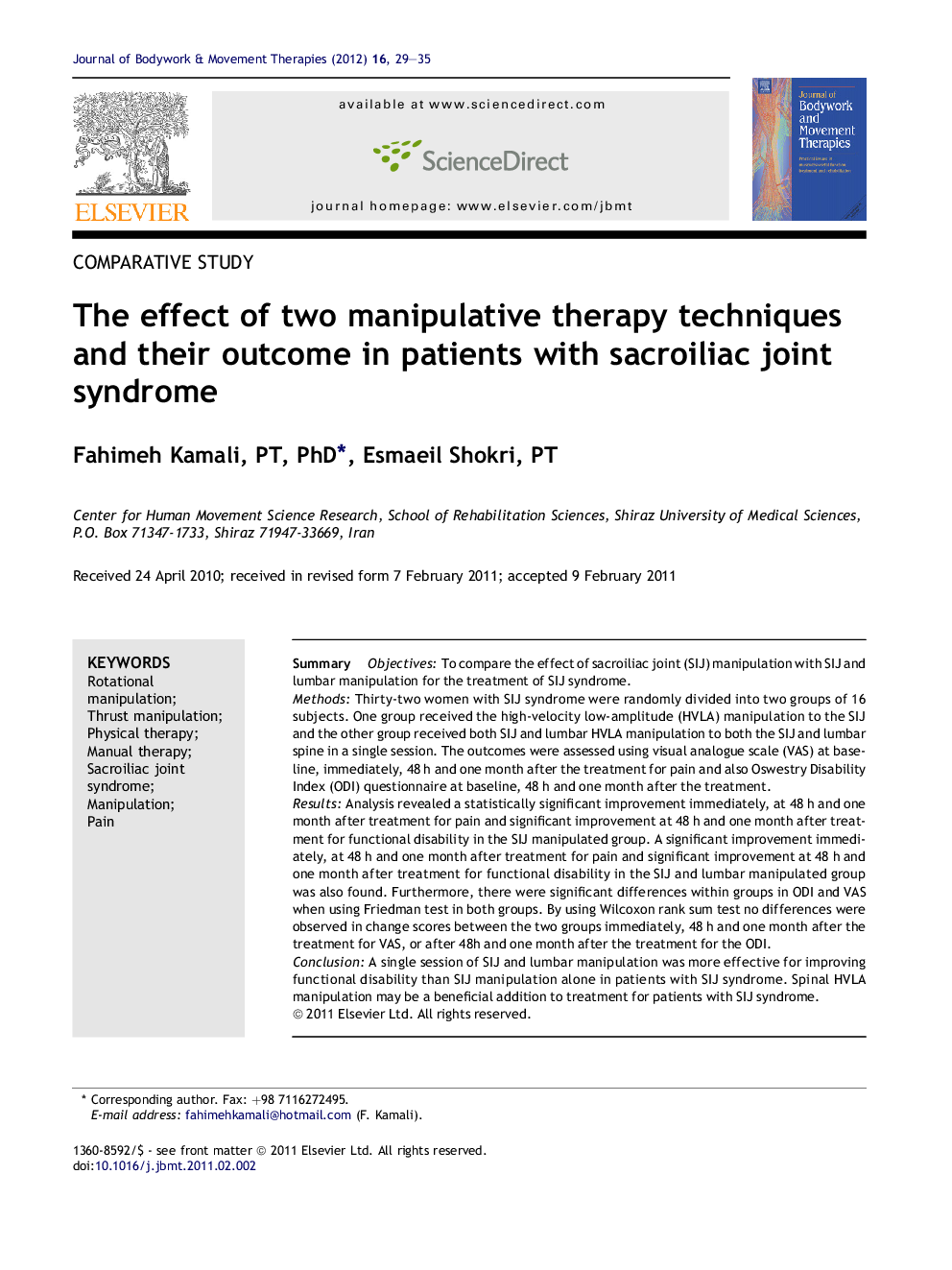| Article ID | Journal | Published Year | Pages | File Type |
|---|---|---|---|---|
| 2619680 | Journal of Bodywork and Movement Therapies | 2012 | 7 Pages |
SummaryObjectivesTo compare the effect of sacroiliac joint (SIJ) manipulation with SIJ and lumbar manipulation for the treatment of SIJ syndrome.MethodsThirty-two women with SIJ syndrome were randomly divided into two groups of 16 subjects. One group received the high-velocity low-amplitude (HVLA) manipulation to the SIJ and the other group received both SIJ and lumbar HVLA manipulation to both the SIJ and lumbar spine in a single session. The outcomes were assessed using visual analogue scale (VAS) at baseline, immediately, 48 h and one month after the treatment for pain and also Oswestry Disability Index (ODI) questionnaire at baseline, 48 h and one month after the treatment.ResultsAnalysis revealed a statistically significant improvement immediately, at 48 h and one month after treatment for pain and significant improvement at 48 h and one month after treatment for functional disability in the SIJ manipulated group. A significant improvement immediately, at 48 h and one month after treatment for pain and significant improvement at 48 h and one month after treatment for functional disability in the SIJ and lumbar manipulated group was also found. Furthermore, there were significant differences within groups in ODI and VAS when using Friedman test in both groups. By using Wilcoxon rank sum test no differences were observed in change scores between the two groups immediately, 48 h and one month after the treatment for VAS, or after 48h and one month after the treatment for the ODI.ConclusionA single session of SIJ and lumbar manipulation was more effective for improving functional disability than SIJ manipulation alone in patients with SIJ syndrome. Spinal HVLA manipulation may be a beneficial addition to treatment for patients with SIJ syndrome.
